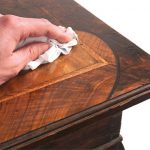We may receive a commission when you use our affiliate links. However, this does not impact our recommendations.
by George Sturt

Author Jim Tolpin rates “The Wheelwright’s Shop”as his No. 1 favorite book , and thinks it should be required reading for all woodworkers. After reading it, I agree.
I love old books – you know, the ones with dog-eared covers that smell musty. So, I set out to find a copy of this essential book. I went directly to my old-book source, alibris.com, and, son of gun, I found a 1923 hard-bound edition for about $40. It took a couple weeks to arrive because it was shipped from England.
When it arrived I was excited! I opened the book and glued to the inside of the cover was a sticker that said this was a book from the Perth & Kinross County Library. The last time the book had been checked out was October, 1976. The first checkout date was 16 October 1935. The checkout card was still in its little pocket, so that’s my bookmark. The author states in his preface, “…¦this book has become an autobiography for the years 1884 to 1891.” It wasn’t what he originally intended when he started writing. I think that happens a lot with writers, and, not so infrequently, with woodworkers.
Mr. Sturt gives a fascinating account of where he was, what he was doing, what was happening in the world at the time, what was the status of the wheelwright’s businesses, etc. That’s just the preface. He draws you right into his shop and the world of making wheels and everything else that makes a horse-drawn wagon what it was – a vehicle that was custom-made for the horses, type of soil and lay of the land of the particular farm where the wagon would be used – for generations. No small feat!
I highly recommend “The Wheelwright’s Shop” to any woodworker or person interested in a time when craftsmen did amazing things with their hand tools. They used spokeshaves to carve perfectly-shaped spokes. There were axes, handplanes and saws.
The author tells about two-man teams showing up with logs, digging a pit and custom-ordering how they wanted the log ripped. It was up to the wheelwright to determine what parts of the log would be the best for spokes, wheels, hubs, sides and tongues and other parts of the wagons.
I found the section about carving the wheels fascinating. They were made in sections that overlapped one another to form a perfectly round wheel. After final assembly of the wheels, the blacksmiths were called into action. They would measure the circumference of the wheel and shape a metal tire to fit it. The metal was heated and quickly carried to the waiting wheel assembly. If it all worked at it should, the metal would be quenched, then shrink around the wheel to pull all the spokes tightly into place. The precision needed was exact.
Get yourself a copy and curl up for a fun and educational trip into the world of the wheelwright.
, Jim Stack, Popular Woodworking Books
Here are some supplies and tools we find essential in our everyday work around the shop. We may receive a commission from sales referred by our links; however, we have carefully selected these products for their usefulness and quality.








My favourite (woodworking) book of all. Not only for the wheelwright stuff but also the insight into the vast reserves of knowledge existing only in the heads (and hands) of traditional woodworkers. Most of this never written down but passed on from person to person. Tried, tested, developed, improved, by generation after generation